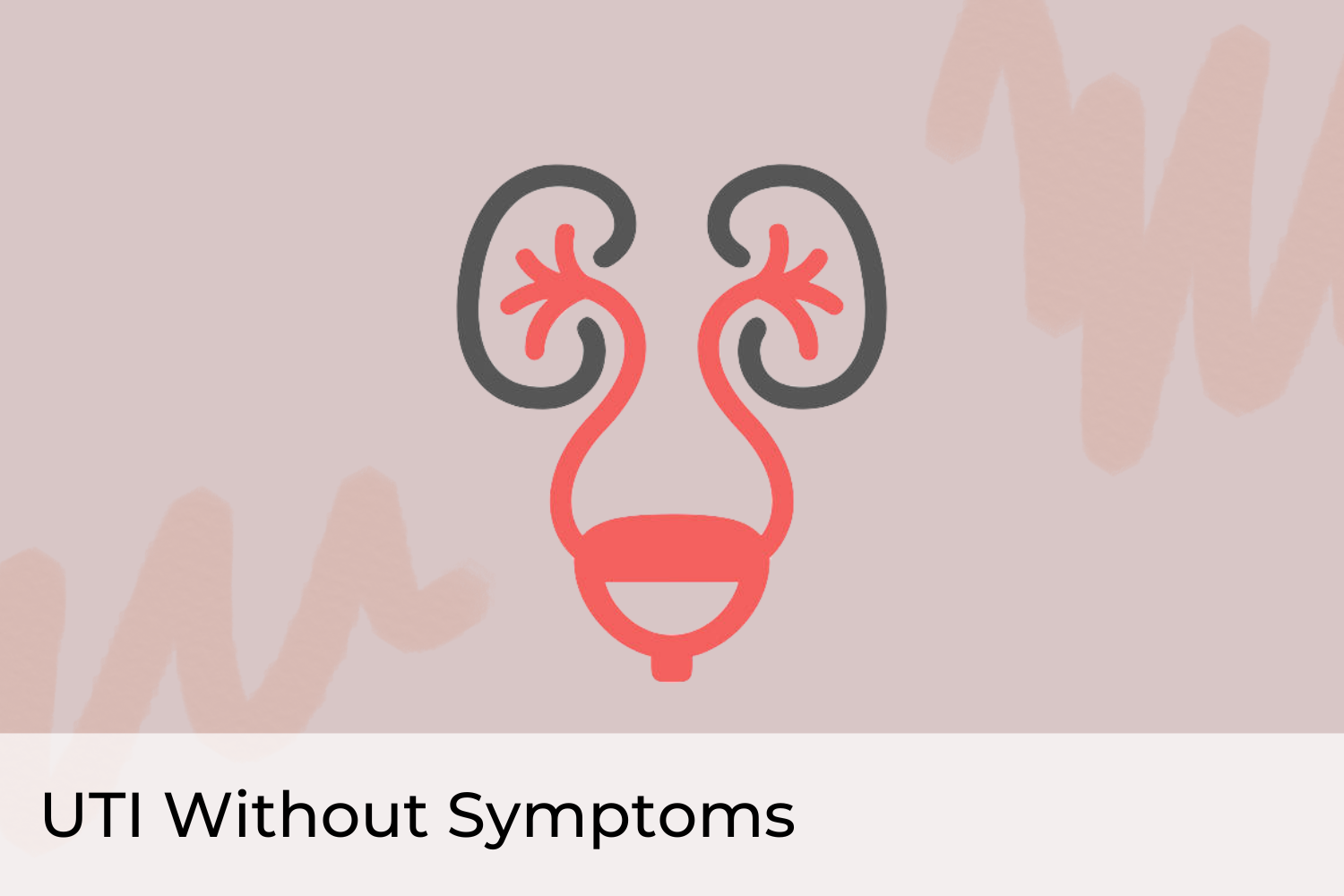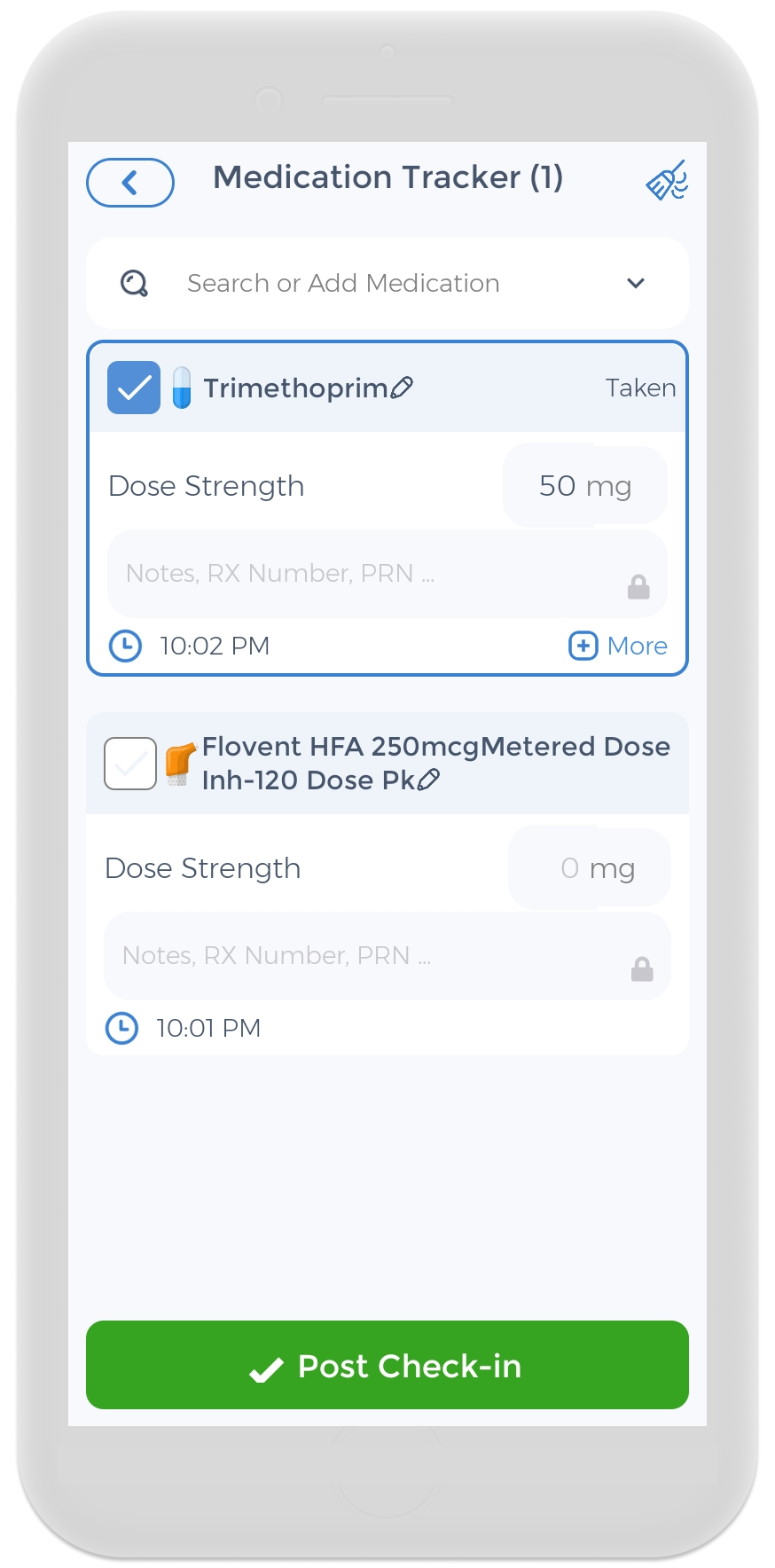
Urinary tract infections (UTIs) are a common condition that can affect people of all ages. Symptoms of UTIs range from mild to severe and can include a frequent urge to urinate, pain or burning during urination, cloudy or strong-smelling urine, and abdominal pain. While UTIs are often easily treated with antibiotics, there is a subtype of UTIs that can go unnoticed called asymptomatic bacteriuria which is essentially when you have a UTI without symptoms.
Asymptomatic bacteriuria refers to the presence of bacteria in the urinary tract without any noticeable symptoms. This condition is often found in high-risk groups such as older adults, pregnant women, people with weakened immune systems, and those undergoing surgical procedures or kidney transplants. Although asymptomatic bacteriuria may seem harmless, you will soon learn about the dangerous consequences they can cause if left untreated.
This article will first look take a look at UTIs, including what they are, why they occur, and some common symptoms. Then, we will dive deeper into the world of asymptomatic bacteriuria, exploring what it is, why it occurs, how it is diagnosed and treated, and the dangers associated with having the condition. With this information, you will gain a better understanding of the importance of regular screening for asymptomatic bacteriuria, particularly in high-risk populations. So, if asymptomatic bacteriuria is something that worries you, read on!
Urinary Tract Infections: What you need to know
What are Urinary Tract Infections?
Urinary tract infections (UTIs) are a type of bacterial infection that affects any part of the urinary system, including the kidneys, ureters, bladder, and urethra. UTIs are a common health issue, especially among women, and can range from mild bladder infections to more serious kidney infections.
Why do Urinary Tract Infections Occur?
UTIs occur when bacteria, such as Escherichia coli (E. coli), enter the urinary system and multiply. There are several factors that increase the risk of UTIs:
- Sexual activity – In sexually active individuals, bacteria from the rectal area can be transferred to vaginal and urethral tissue, increasing the risk of sexually transmitted infections and UTIs.
- Poor hygiene – Poor hygiene practices, such as not wiping properly after using the bathroom, can increase the risk of UTIs.
- Use of certain devices – The use of certain devices, such as urinary catheters, can increase the risk of UTIs as they can introduce bacteria into the lower urinary tract.
- Weakened immune system – A weakened immune system can increase the risk of UTIs as it makes it more difficult for the body to fight off infections.
- Anatomy – UTIs affect women more due to their anatomy, as the female urethra is shorter and closer to the anus than in men.
- Holding in urine – Holding in urine for long periods of time can increase the risk of UTIs as it can lead to a buildup of bacteria in the urinary system.
- Certain types of birth control – The use of certain types of birth control, such as spermicidal agents or diaphragms, can increase the risk of UTIs.
It is essential to understand the factors that increase the risk of UTIs in order to take the necessary precautions to prevent them. You can avoid preventable UTIs by carefully monitoring your health and lifestyle related to the mentioned aspects.
Who is at Risk of Urinary Tract Infections?
UTIs can affect anyone, but certain groups are at a higher risk, including sexually active women. Women are at a higher risk of UTIs due to their anatomy, as the female urethra is shorter and closer to the anus compared to men. This makes it easier for bacteria to travel from the anus to vaginal and urethral tissue and into the urinary system, leading to an infection. Additionally, older adults, pregnant women, and others are also at a higher risk of UTIs:
- Older adults – As people age, they may experience changes in their urinary tract that can increase the risk of UTIs, such as a weakened immune system, decreased mobility, and urinary incontinence. They may also take medications that increase the risk of UTIs.
- Pregnant women – Pregnancy can increase the risk of UTIs due to the changes in the urinary tract that occur during pregnancy, such as increased pressure on the bladder and urethra. Pregnant women are also at a higher risk of UTIs because their immune systems are weakened during pregnancy, making it more difficult for the body to fight off infections.
- People with spinal cord injury – People with spinal cord injury are at increased risk of UTIs because they may have difficulty fully emptying their bladder, which can lead to the buildup of bacteria.
- Prostate gland infections – The prostate is a gland located just below the bladder in men and produces fluid that makes up part of semen. As men age, the prostate gland can become enlarged and can obstruct the flow of urine, which can increase the risk of lower urinary tract infections.
If you are part of this at-risk group, you should be extra vigilant when it comes to monitoring potential UTI symptoms.
What are some Common UTI Symptoms?
UTIs can cause a variety of painful or bothersome symptoms. Here are some common UTI symptoms:
- Burning sensation when urinating – A burning or stinging sensation when urinating are common UTI symptoms.
- Increased frequency of urination – A need to urinate more frequently than usual is another common symptom of UTIs
- Urgency – A strong urge to urinate, even when there is little urine in the bladder, are common UTI symptoms.
- Passing cloudy or strong-smelling urine – UTIs can cause the urine to become cloudy or strong-smelling.
- Pain or pressure in the lower abdomen or back – Pain or pressure in the lower abdomen or back are common UTI symptoms. It can also cause pelvic pain.
- Kidney stones – UTIs can cause kidney infections or stones, which are small, hard deposits that form in the kidneys. Symptoms of kidney stones include pain in the side, back, or lower abdomen and blood in the urine.
- Difficult emptying – UTIs can cause difficulty emptying the bladder, which can lead to feelings of discomfort or pressure in the lower abdomen.
- Bladder flank pain – UTIs can cause pain that involves the bladder or the area surrounding it, which is known as bladder flank pain.
If you are experiencing any of these symptoms, it would be a good idea to bring them up to your doctor. Untreated UTIs can lead to more serious complications, so it is a good idea to address them early.
Asymptomatic Bacteriuria: Urinary Tract Infections without the Symptoms
What is Asymptomatic Bacteriuria?
Urinary tract infections (UTIs) are a common problem, but not everyone who has a UTI experiences symptoms. In some cases, there could be bacteria in the urine without any sign or symptoms, called asymptomatic bacteriuria. Asymptomatic bacteria infections can be just as serious as one with symptoms and can lead to long-term health problems if left untreated. Others may feel like they have a UTI before their period every time.
Why Asymptomatic Bacteriuria Occurs
There are several factors that can contribute to the development of asymptomatic bacteriuria, some of which are similar to risk factors for UTIs.
- Age: Older adults are more likely to develop asymptomatic bacteriuria due to changes in the urinary tract and a decline in immune function.
- Pregnancy: Asymptomatic bacteriuria occurs in pregnant women due to hormonal changes and increased pressure on the bladder.
- Weakened Immune System: People with weakened immune systems, such as those with HIV or undergoing chemotherapy, are more susceptible to asymptomatic bacteriuria.
- Medical Conditions: Certain medical conditions, such as diabetes, can increase the risk of asymptomatic bacteriuria by impairing the body’s ability to fight off infections.
- Recent Use of a Urinary Catheter: The use of a urinary catheter can introduce bacteria into the urinary tract, leading to asymptomatic bacteriuria.
- Kidney transplant patients: Kidney transplant patients undergoing surgery involving immunosuppressive medications, which are necessary for preventing rejection of the transplanted kidney, are at a higher risk for asymptomatic bacteriuria. These medications can weaken the immune system, making the patient more susceptible to infections. Additionally, the urinary tract is often disturbed during the kidney transplant procedure, which can increase the risk of bacteria entering the bladder and lead to asymptomatic bacteriuria.
Why is Asymptomatic Bacteriuria Important?
Although it may seem harmless, asymptomatic bacteriuria can actually have serious consequences if left untreated.
One of the dangers of asymptomatic bacteriuria is that it can lead to recurrent UTIs. This can result in a persistent cycle of infections that are difficult to manage and can result in chronic pelvic pain and discomfort or even more serious bladder and kidney infections.
Another danger is that it can lead to more serious infections such as pyelonephritis, an infection of the kidney. This can result in kidney damage and even kidney failure if left untreated. This demonstrates why it is important to be wary of asymptomatic bacteriuria: despite it being so seemingly benign, it could lead to life-threatening situations.
During pregnancy, the presence of bacteria in the urinary tract can increase the risk of a number of complications, including premature birth, low birth weight, and other serious health problems for both the mother and baby. The immune system of a pregnant woman is altered, making it more susceptible to infections. In addition, the pressure from the growing uterus on the bladder can cause urine to flow back up into the kidneys, increasing the risk of infection.
As mentioned, if left untreated, asymptomatic bacteriuria can lead to a UTI, which is a common and potentially serious condition during pregnancy. UTIs can cause significant discomfort for the mother, and may also increase the risk of serious complications such as preterm labor, low birth weight, and even stillbirth.
It is important for people at high risk of developing asymptomatic bacteriuria to be regularly screened for the condition, and for anyone with a positive result to receive prompt treatment to prevent the development of more serious infections.
Diagnosing your UTI without symptoms
Asymptomatic bacteriuria is diagnosed through a simple urine test, also known as a urinalysis. A urinalysis, or simple urine test, is a common diagnostic tool used to diagnose asymptomatic bacteriuria. It is a non-invasive test that involves analyzing a urine sample to look for signs of bacterial infection. During a urinalysis, the following factors are typically evaluated in the urine sample: appearance, color, clarity, and specific gravity of the urine; the presence of various substances in the urine such as glucose, protein, red and white blood cells, and bacteria; and pH levels.
In some cases, further testing may be necessary to determine the type of bacteria causing the infection. A urine culture can be performed to identify the specific type of bacteria and guide appropriate treatment. A urine culture is a test that helps identify the type of bacteria causing a UTI, including asymptomatic bacteriuria. This test involves collecting a urine sample, which is then cultured in a laboratory to allow bacteria to grow. The type of bacteria present can then be identified through a process known as bacteriology.
It’s important to differentiate between bacteria that are harmless and those that indicate asymptomatic bacteriuria. Bacteria can be present in the urine sample due to contamination during collection, so repeat urine cultures may be needed to diagnose asymptomatic bacteriuria with certainty. The Infectious Diseases Society of America defines bacteriuria as “2 consecutive voided urine specimens with isolation of the same bacterial strain.”
Individuals at high risk of developing asymptomatic bacteriuria, such as older people, pregnant women, people with weakened immune systems, and those undergoing surgical procedures or kidney transplants, may need to undergo regular screening for the condition. This is to ensure early detection and prompt treatment, as left untreated, asymptomatic bacteriuria can lead to serious health complications.
Treating UTI’s without symptoms
The approach to the treatment of asymptomatic bacteriuria depends on various factors, including the individual’s age, overall health, and underlying medical conditions. In some cases, there is no need to treat infections, as the asymptomatic bacteria may be naturally cleared by the body’s immune system.
However, in other cases, antibiotic therapy may be required to treat infections and prevent complications. The type of antibiotic therapy will depend on the type of bacteria causing the infection and will be determined through urine cultures.
It’s important to complete the full course of the antibiotic treatment if you require treatment, even if symptoms resolve before the medication is finished. Failure to adhere to the instructions of the physician prescribing antibiotics can result in antibiotic resistance and the re-emergence of the infection.
People at high risk of developing asymptomatic bacteriuria, such as pregnant women and people undergoing surgery involving immunosuppressive medications or kidney transplants, may be prescribed prophylactic antibiotics to prevent the development of an infection.
Using an App to Track your Symptoms
As there are a variety of symptoms associated with UTIs, it is important to track your symptoms. You can do so on the CareClinic app. Simply enter your symptoms as they come up and add any relevant details. For example, you can choose frequent urination as a symptom and then record the severity of it. You can also add some characteristics and notes if you feel like those will be useful to keep track of. Then, click “Post Check-in” and everything is recorded! The app will record all this information so you do not need to worry about it. Next time you see your doctor, all the information will be handy on your phone.
do so on the CareClinic app. Simply enter your symptoms as they come up and add any relevant details. For example, you can choose frequent urination as a symptom and then record the severity of it. You can also add some characteristics and notes if you feel like those will be useful to keep track of. Then, click “Post Check-in” and everything is recorded! The app will record all this information so you do not need to worry about it. Next time you see your doctor, all the information will be handy on your phone.
It is also very important to track your lifestyle activity for UTIs. If you are sexually active, you can keep track of when you engage in activities in the diary section of the app. This could also be important if you end up developing UTIs or sexually transmitted infections, as to alert others of the potential that they came in contact with potentially infectious diseases.
Additionally, if you are treated with antibiotics, you can keep track of your antimicrobial treatment on the app. The CareClinic app has a dedicated section for individuals to enter their medications and will give daily reminders for individuals to take them.
Tracking may seem like a daunting task to begin, despite how much you really want to. It’s not easy to find the motivation to go out and take a walk, but the gratification of checking it off your list for the day may make it worth it. CareClinic has a variety of trackers – including mood, sleep, and hydration trackers – along with visual analysis tools, that can help with understanding how your self-care journey progresses and the impact it is having on your well-being.
Improve Your Well-being
Additionally, if you decide to create a more targeted checklist, try using CareClinic as an anxiety tracker app to break any cycle of anxiety. Create a separate care plan with a customized check-in page to make tracking easy and convenient. CareClinic is here to ensure you feel your best by prioritizing your mental and physical well-being through a daily routine checklist.
In conclusion, asymptomatic bacteriuria is a form of urinary tract infection that can go unnoticed due to the absence of symptoms. Despite its benign appearance, it can lead to serious health complications if not addressed. Regular screening for asymptomatic bacteriuria is essential, especially for high-risk populations such as older adults, pregnant women, people with weakened immune systems, and those undergoing surgical procedures or kidney transplants. Early diagnosis and treatment with antibiotics can prevent the development of more severe infections and ensure the optimal health of those affected. It is crucial to work closely with a health care provider to develop a personalized treatment plan that takes into account individual factors such as age, health status, and underlying medical conditions. With a better understanding of asymptomatic bacteriuria and its implications, we can take proactive steps to protect our health and well-being.
References
- National Institute of Diabetes and Digestive and Kidney Diseases. (2023). Bladder infection (Urinary tract infections – UTI) in adults. https://www.niddk.nih.gov/health-information/urologic-diseases/bladder-infection-uti-in-adults
- Mayo Clinic. (2022). Urinary tract infection (UTI). https://www.mayoclinic.org/diseases-conditions/urinary-tract-infection/symptoms-causes/syc-20353447
- Centers for Disease Control and Prevention. (2021). Urinary Tract Infections. https://www.cdc.gov/antibiotic-use/uti.html
- “Prostatitis.” Mayo Clinic, Mayo Foundation for Medical Education and Research, 20 Apr. 2021, https://www.mayoclinic.org/diseases-conditions/prostatitis/symptoms-causes/syc-20355766.
- Cleveland Clinic. (2021). Urinary Tract Infections (UTIs). https://my.clevelandclinic.org/health/diseases/9135-urinary-tract-infections
- “What is Asymptomatic Bacteriuria?” WebMD, WebMD, https://www.webmd.com/a-to-z-guides/what-is-asymptomatic-bacteriuria
- National Kidney Foundation. (2021). Kidney Transplantation. https://www.kidney.org/transplantation/kidney-transplantation
- Infectious Diseases Society of America Guidelines for the Diagnosis and Treatment of Asymptomatic Bacteriuria in Adults. (2005). Nicolle et al, IDSA. https://academic.oup.com/cid/article/40/5/643/363229



